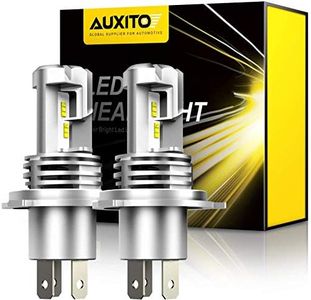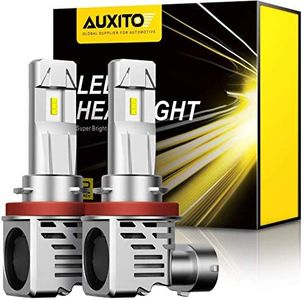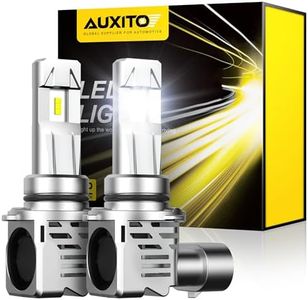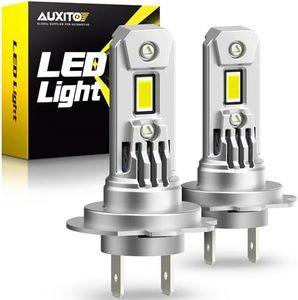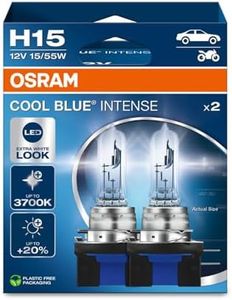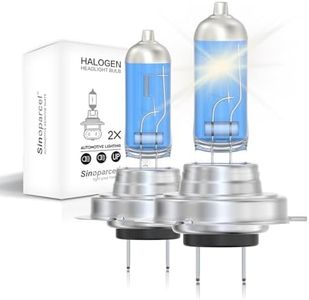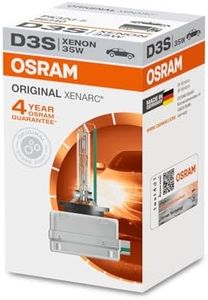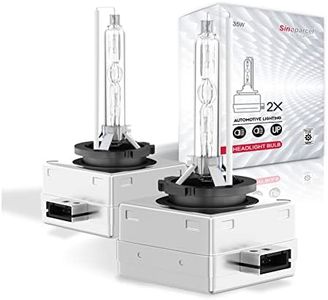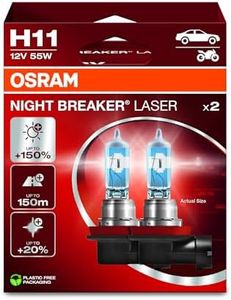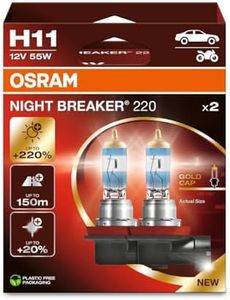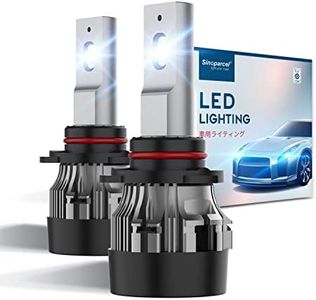We Use CookiesWe use cookies to enhance the security, performance,
functionality and for analytical and promotional activities. By continuing to browse this site you
are agreeing to our privacy policy
10 Best Headlight Bulbs
From leading brands and best sellers available on the web.Buying Guide for the Best Headlight Bulbs
When selecting headlight bulbs for your vehicle, your primary goals should be visibility, safety, and compatibility with your car. Since headlights are critical for night driving and poor weather conditions, choosing the right bulb ensures you see well and are seen by others. Consider how frequently you drive at night, the typical weather you encounter, and your comfort with installing different types of bulbs.Bulb Type (Halogen, LED, HID)This refers to the technology used in the bulb to produce light. Halogen bulbs are the most common and are known for their affordability and ease of installation, but they are generally less bright and have a shorter lifespan. LED bulbs use less energy and last longer while emitting a brighter and whiter light, which can improve visibility, but they may require special fittings or heat management. HID bulbs produce a very bright, bluish-white light and are popular for their high output, but they often involve more complex installation. When choosing, consider your vehicle’s compatibility and your priorities: longevity, brightness, or ease of installation.
Brightness (Lumens)Brightness is measured in lumens and determines how much light the bulb produces. Lower lumens (1,000–1,500) are typical for basic halogen bulbs and offer adequate light for city driving. Mid-range lumens (1,500–3,000) are brighter and improve visibility on rural or unlit roads without being excessively bright for oncoming drivers. High lumen bulbs (over 3,000) are very bright, typically seen in HID or top-tier LED bulbs, and are great for maximum visibility but can cause glare if not adjusted properly. Choose based on your driving environment: stick with lower lumens for city and well-lit areas, and consider higher lumens for darker, rural roads.
Color Temperature (Kelvin)Color temperature, measured in Kelvin (K), describes the color of the light emitted. Bulbs around 3,000K emit yellowish light, good for foggy or rainy conditions. 4,000–5,000K bulbs produce white light, similar to daylight, enhancing visibility and contrast. Bulbs above 6,000K have a blue-white look, which some people find stylish but may be less effective in fog and cause more glare. Think about your usual driving conditions: yellowish light for bad weather, white light for clarity in most situations.
LifespanThis is the expected operating life of the bulb, usually measured in hours. Standard halogen bulbs last from 500 to 1,000 hours, LEDs often exceed 10,000 hours, and HID bulbs are in between. If you don’t want to replace bulbs frequently, or you drive a lot at night, look for bulbs with a longer lifespan. If you occasionally drive at night, lifespan might be less of a concern.
Fitment/CompatibilityFitment refers to whether a bulb will physically and electrically fit your vehicle. Headlight bulbs come in various sizes and bases (such as H11, 9005, etc.), so it’s important to check your car’s manual or existing bulbs to ensure the new bulb will fit properly. Using the wrong fitment can lead to poor performance or even damage. Always verify compatibility with your car before making a purchase.
Beam PatternThe beam pattern determines how the light spreads on the road. A good beam pattern will focus the light where it’s needed (on the road ahead) without blinding oncoming drivers. Some bulbs may not work well with certain housings and can scatter light, reducing effectiveness and potentially causing glare. If you do a lot of night driving, or drive in areas with other traffic, picking a bulb that maintains a sharp, focused beam pattern is important for safety.

